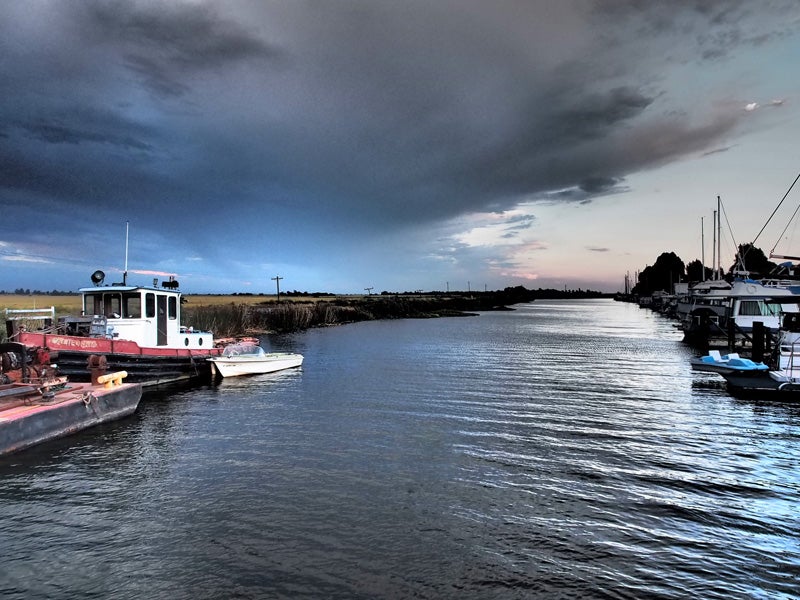Fish Flailing Amid California Drought
Poor water management during California’s drought is pushing multiple fish species to the brink of extinction.

This page was published 10 years ago. Find the latest on Earthjustice’s work.
Troubling times lie ahead for at least four species of fish that call the San Francisco Bay-Delta home. Actually, we’re getting closer to the end times every second: cue Chopin’s Funeral March. You know, the one with the organ.
It’s no secret that California is suffering from the worst drought in recorded history; the April 1 snowpack report hit an all-time record low of six percent of normal, shattering last year’s dismal 25-percent-of-normal record low. Many Californians are beginning to feel the effects of this drought and will continue to do so as water rationing is implemented and urban water use responds to the Governor’s mandate for a 25 percent reduction. However, for now at least, daily life for most will continue more or less as normal; brown front lawns and having to ask for a glass of water in restaurants may serve as our chief reminders of the state’s dry conditions.
Not so for the fish.
The Bay Institute, a nonprofit dedicated to protecting and restoring San Francisco Bay and its watershed, is calling for action to help save four imperiled species. They all once swam in abundance in the Sacramento and San Joaquin Rivers, which flows into the San Francisco Bay. The first is the long-politicized delta smelt, whose population is at an all-time record low—in fact, it may well be on the brink of extinction. Recent reports indicate that the fish could be functionally extinct in the wild, meaning that there may be too few smelt remaining in the Delta to find each other and successfully breed to perpetuate the species. State officials conducted a survey earlier this month at 40 sites around the Delta and found only one smelt. Just three years ago this same survey found 143.
The delta smelt has long been considered the “canary in the coalmine” for the Delta, an indicator species that reflects the broader health of the Delta ecosystem. Given the smelt’s grim population status, it’s not surprising that other species are also declining.
It’s estimated that 95% of the winter-run Chinook salmon hatched in 2014 died before reaching the Delta on their seaward migration. Longfin smelt and starry flounder, both formerly abundant in the Delta, are at the second lowest levels ever recorded. But it’s not just the lack of rain that’s turning up the heat for these fish, it’s the way that water is managed and allocated by the state during the drought.
In February, the State Water Resources Control Board granted requests by California’s massive federal and state water projects, which export water from the Delta for agricultural and municipal uses far south of the Delta, to suspend Clean Water Act requirements for freshwater flows to San Francisco Bay. These requirements were designed specifically to increase freshwater flows through the Delta in the spring to maintain its ecological health. The same suspension occurred in 2014, and the results were not good.
These flows are strongly correlated with the vitality and abundance of many resident and migratory Bay-Delta species, and they would have provided a much-needed boost to the record-low population numbers of various native fish species caused by water exports. The alleged reason for abandoning the freshwater flow requirements was to protect salmon habitat in the Sacramento River by preserving cold water supplies upstream. However, as noted above, 2014 saw a 95% loss of winter-run Chinook salmon hatchlings and severe losses to both the spring and fall-run Chinook upstream of the Delta. In reality, the abandonment of the freshwater flow standards was to allow for more water exportation from the Delta during the drought to serve industrial agriculture and southern California, not to protect imperiled fish in the rivers that feed the Delta.
Clearly this strategy should be abandoned, not continued. The Clean Water Act requirements are critical to preventing the extinctions of what were once some of the Delta’s most abundant native fish species. It’s high time to let the State Water Resources Control Board know that it must stop suspending these flow requirements, which are essential to these species’ survival and to the health of the Bay-Delta ecosystem.
You can help by signing this petition asking the California Resources Control Board to restore the flow of fresh water to the San Francisco Bay Estuary.